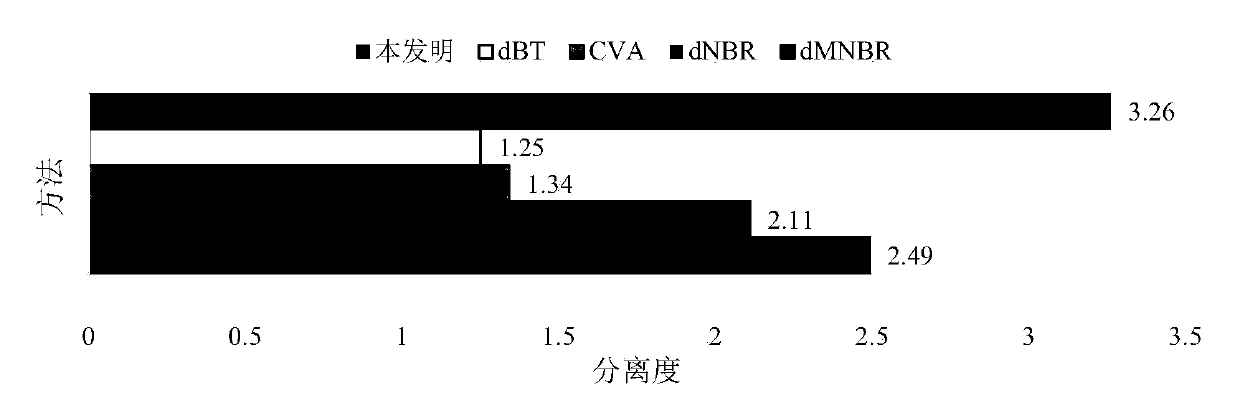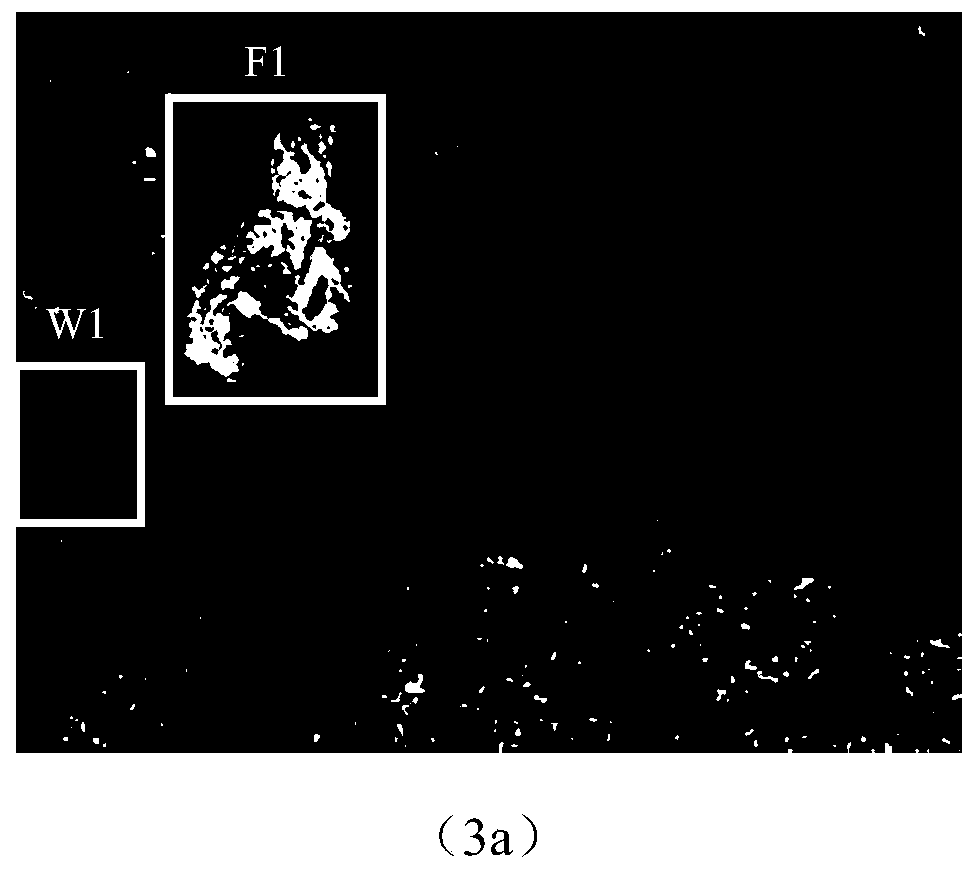Burned area detection method based on short-wave infrared and thermal infrared data feature fusion
A fire-burned, short-wave infrared technology, applied in radiation pyrometry, measuring devices, optical radiation measurement, etc., can solve the problem of missed detection of target pixels, and achieve the effect of accurate extraction and suppression of complex background changes.
- Summary
- Abstract
- Description
- Claims
- Application Information
AI Technical Summary
Problems solved by technology
Method used
Image
Examples
Embodiment
[0072] The experimental data adopts medium-resolution Landsat-8 satellite remote sensing Level 1 (L1) product data, and the map projection is UTM-WGS84 Antarctica polar projection, which comes from the official website of the United States Geological Survey (USGS). The research target is the Grampians National Park Fire (GNPF) in Victoria, southeastern Australia. This experiment uses January 12, 2014 (before the disaster) and January 28, 2014 (after the disaster). Image data.
[0073] Experimental results:
[0074] 1. Analysis of the ability of different methods to separate burnt areas and non-burned areas
[0075] Based on 0.1% random samples, respectively calculate the separation degree of 5 kinds of methods (CVA, dNBR, dMNBR, dBT and the present invention) in the research area to extract the gray scale map of the burnt area. The higher the value, the stronger the ability to separate burned and non-burned areas. see results figure 1 . Depend on figure 1 It can be seen ...
PUM
 Login to View More
Login to View More Abstract
Description
Claims
Application Information
 Login to View More
Login to View More - R&D
- Intellectual Property
- Life Sciences
- Materials
- Tech Scout
- Unparalleled Data Quality
- Higher Quality Content
- 60% Fewer Hallucinations
Browse by: Latest US Patents, China's latest patents, Technical Efficacy Thesaurus, Application Domain, Technology Topic, Popular Technical Reports.
© 2025 PatSnap. All rights reserved.Legal|Privacy policy|Modern Slavery Act Transparency Statement|Sitemap|About US| Contact US: help@patsnap.com



